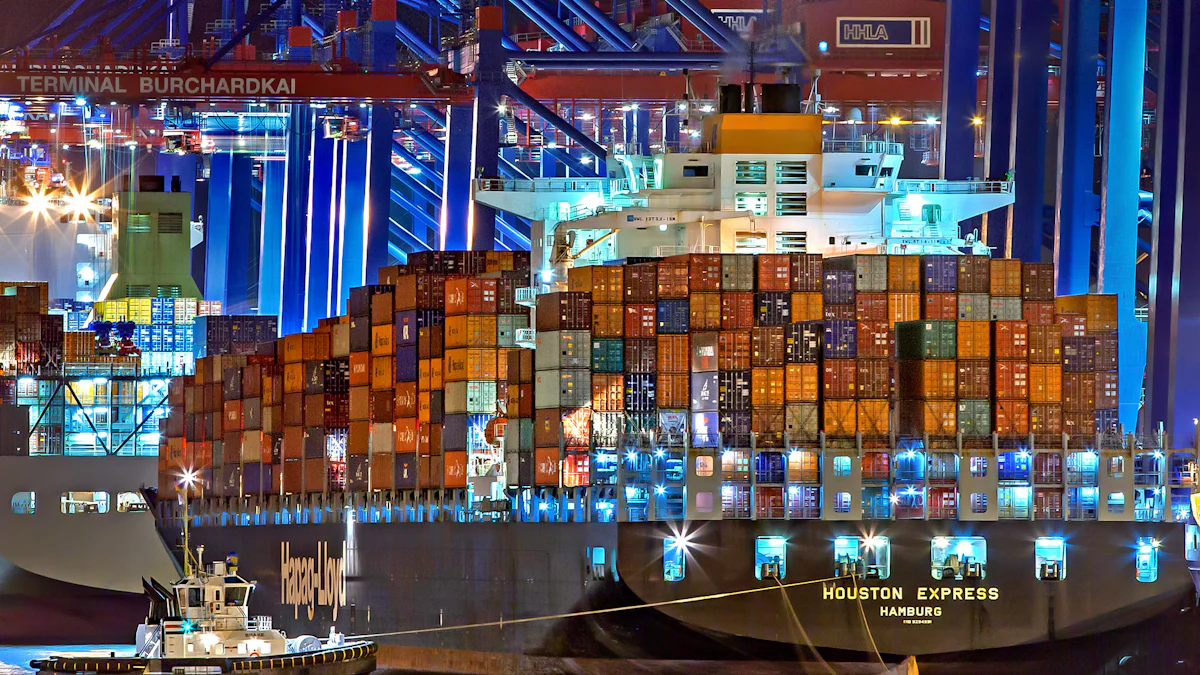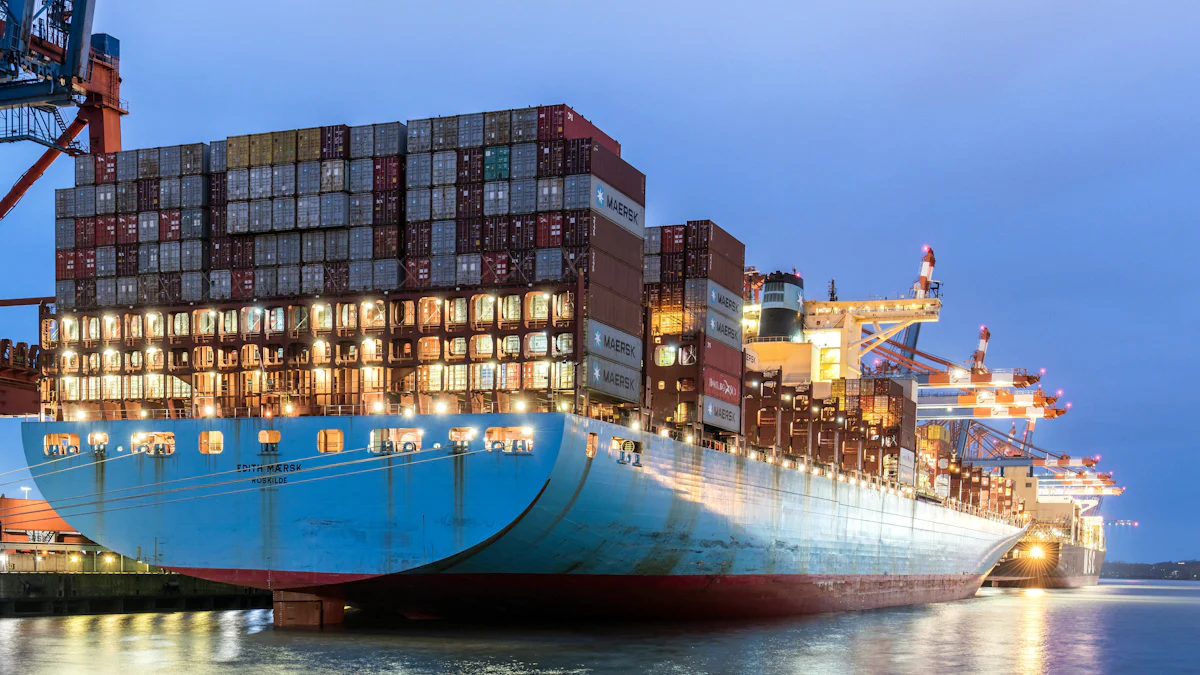2025 Ocean Freight Insights: Adapting to Cost and Route Changes

In 2025, adapting to ocean freight trends becomes crucial for your business. As global seaborne trade is set to rise by 2.3%, understanding cost changes and route recommendations will help you stay competitive. Ocean freight carriers face challenges like potential cargo prices reaching $20,000, nearing COVID-era peaks. Strategic adaptation ensures you navigate these shifts effectively. Embrace change to maintain your edge in the evolving sea freight landscape.
Key Takeaways
Stay informed about ocean freight trends to maintain a competitive edge as global trade rises by 2.3%.
Leverage technological advancements like AI and big data to optimize your supply chain and reduce costs.
Invest in cleaner technologies to comply with environmental regulations, which can enhance your brand's reputation and potentially lower long-term costs.
Monitor fuel prices and currency exchange rates to anticipate changes in freight costs and adjust your logistics strategies accordingly.
Utilize popular shipping routes for reliability and cost-effectiveness, while also considering alternative routes for risk management.
Incorporate the China-Europe Express Rail into your logistics strategy for faster, cost-effective delivery and enhanced supply chain resilience.
Develop flexible financial planning and risk management strategies to navigate the complexities of the ocean freight market in 2025.
Overview of 2025 Ocean Freight Trends
In the rapidly evolving landscape of ocean freight, staying informed about the latest trends is crucial for maintaining a competitive edge. As we look towards 2025, several key factors will shape the industry, including technological advancements, environmental regulations, and shifting market dynamics.
Technological Advancements in Ocean Freight
Technology continues to revolutionize the ocean freight industry. Automation, digitalization, and big data processing capabilities are optimizing supply chain management. You can leverage these advancements to enhance efficiency and reduce costs. For instance, AI-driven analytics provide real-time insights into shipping routes, helping you make informed decisions. By embracing these innovations, you position your business to thrive in the 2025 ocean freight market.
Environmental Regulations Impacting Shipping Trends for 2025
Environmental regulations play a significant role in shaping shipping trends for 2025. Governments worldwide emphasize reducing carbon emissions and promoting sustainable practices. Compliance with regulations like the IMO 2020, which mandates lower sulfur content in marine fuels, can lead to higher operational expenses. However, investing in cleaner technologies aligns your business with green logistics initiatives, potentially reducing long-term costs and enhancing your brand's reputation.
Market Dynamics and Ocean Freight Trends
Understanding market dynamics is essential for navigating the 2025 ocean freight landscape. The global ocean fleet is expected to grow significantly, impacting supply and demand dynamics. New shipping alliances will emerge, influencing international trade and trade patterns. As a result, you must prioritize agility and flexibility to adapt to these changes. By staying informed about global trade patterns and aligning your strategies accordingly, you can capitalize on opportunities and mitigate risks.
Cost Changes and Their Implications
Understanding the cost changes in ocean shipping is crucial for your business strategy in 2025. As you navigate the complexities of the market, consider how fluctuations in fuel prices, port fees, and currency exchange rates can impact your bottom line.
Fuel Price Fluctuations and Freight Rates in 2025
Fuel prices significantly influence freight rates in 2025. Shipping companies often pass on the rising costs of fuel to shippers, affecting your overall expenses. The maritime industry faces pressure to comply with stricter environmental regulations, which may lead to investments in cleaner technologies and fuels. These investments can further drive up costs. By staying informed about fuel price trends, you can anticipate changes in freight rates and adjust your logistics strategies accordingly.
Port Fees, Surcharges, and Cost Management
Port fees and surcharges represent another layer of costs in ocean shipping. As ports upgrade their infrastructure to handle larger vessels and improve efficiency, they may increase fees. You need effective cost management strategies to mitigate these rising costs. Consider optimizing your supply chain by leveraging advanced technologies and choosing efficient routes. This approach can help you achieve significant savings and maintain competitiveness in the market.
Currency Exchange Rates and Their Effect on Cost
Currency exchange rates also play a vital role in determining the cost of ocean freight. Fluctuations in exchange rates can affect the cost of importing and exporting goods. By monitoring these changes, you can make informed decisions about when to engage in international transactions. Strategic planning and financial foresight will enable you to minimize the impact of unfavorable exchange rates on your shipping expenses.
Best Route Recommendations

Navigating the complex world of ocean freight requires strategic route planning. In 2025, choosing the right path can significantly impact your business's efficiency and cost-effectiveness. Let's explore some of the best route recommendations to optimize your shipping operations.
Popular Shipping Routes and Cost-Effectiveness
Popular shipping routes have long been the backbone of global trade. These routes, often near-coastal or transoceanic, provide reliable pathways for transporting goods. By leveraging these established routes, you can benefit from competitive freight rates and predictable delivery times. For instance, the historic trade routes in the Mediterranean, once networked by Genoa/Spain and Venice/Ottomans, continue to influence modern shipping lanes. Access to big data enhances these age-old networks, increasing efficiency and boosting automation. By choosing popular routes, you ensure a balance between cost and reliability, making your logistics operations more efficient.
Alternative Routes and Risk Management
While popular routes offer stability, alternative routes present opportunities for risk management and flexibility. In times of geopolitical disruptions or capacity constraints, having alternative routes can be a game-changer. These routes may not always be the shortest, but they can provide a strategic advantage by avoiding congested areas or high-risk zones. Efficient route planning involves assessing these alternatives and incorporating them into your logistics strategy. By doing so, you can mitigate potential risks and ensure consistent delivery times, even in challenging circumstances.
Regional Insights: Asia-Pacific and Transatlantic Options
The Asia-Pacific and Transatlantic regions offer unique opportunities for optimizing your shipping strategy. The Asia-Pacific region, with its dynamic economies and growing trade volumes, presents lucrative routes for businesses. Efficient route planning in this area can lead to significant cost savings and improved delivery times. Similarly, the Transatlantic routes, connecting Europe and North America, remain vital for international trade. By understanding the nuances of these regional routes, you can tailor your logistics approach to maximize efficiency and capitalize on emerging market trends.
Strategies for Adapting to Changes
In the dynamic world of ocean freight, adapting to changes is not just an option—it's a necessity. As you navigate the complexities of 2025, adopting strategic approaches will ensure your business remains competitive and resilient.
Leveraging Technology with JUSDA's Solutions
Embrace the power of technology to transform your logistics operations. JUSDA offers cutting-edge solutions that integrate automation and digitalization into your supply chain. By utilizing AI and big data, you can gain real-time insights and predictive accuracy, optimizing your operations. These technological advancements streamline processes, reduce costs, and enhance service quality. With JUSDA's innovative tools, you position your business at the forefront of the ocean freight industry.
Expert Testimony: "Technological advancements play a pivotal role in shaping Ocean Freight Market Dynamics. Automation and digitalization streamline operations and enhance efficiency."
Building Resilient Supply Chains with China-Europe Express Rail
The China-Europe Express Rail offers a robust alternative to traditional sea routes. This service provides a faster and more cost-effective solution, bridging the gap between speed and expense. By incorporating this rail service into your logistics strategy, you enhance the resilience of your supply chain. The rail network ensures timely delivery and reduces dependency on congested sea routes. This flexibility allows you to adapt swiftly to market changes and maintain a steady flow of goods.
Financial Planning and Risk Management in Ocean Freight
Effective financial planning is crucial for navigating the challenges of 2025. You must anticipate fluctuations in costs and develop strategies to mitigate risks. Focus on flexible shipping solutions that allow you to adjust routes and modes of transport as needed. By doing so, you can manage expenses and maintain profitability. Proactive risk management ensures that your business remains agile and prepared for any disruptions in the ocean freight market.

JUSDA Solutions
To provide you with professional solutions and quotations.
As we look towards 2025, the ocean freight industry presents both challenges and opportunities. Key trends, such as technological advancements and environmental regulations, will shape the landscape. Adapting to cost changes and route recommendations becomes essential for maintaining competitiveness. By embracing proactive strategies, you can navigate these shifts effectively. Prepare for the evolving maritime landscape by leveraging innovations and emerging markets. This approach ensures that you remain resilient and poised for growth. Let us seize the opportunities that 2025 brings and position ourselves for success in the dynamic world of ocean freight.
See Also
Discovering 2024's Innovations in Sea Freight Logistics
Understanding Current Trends in Logistics Risk Management
Five Key Trends Shaping Future Supply Chain Efficiency
Get Prepared: New Transport Tech Innovations for Supply Chains
